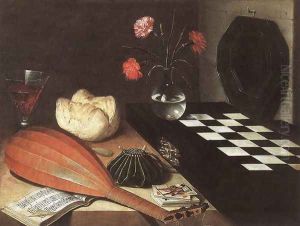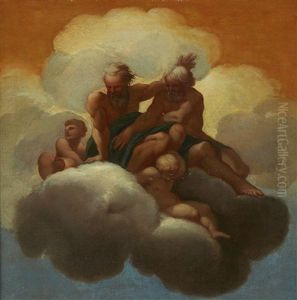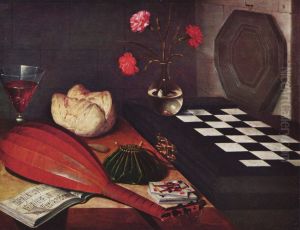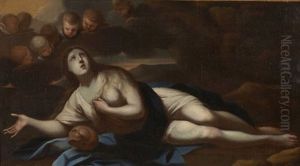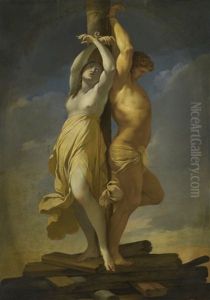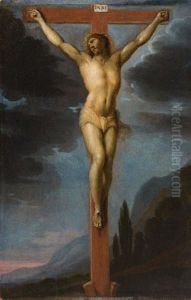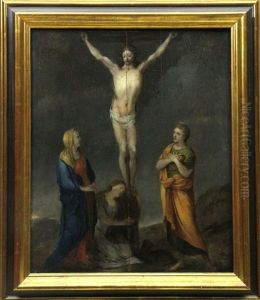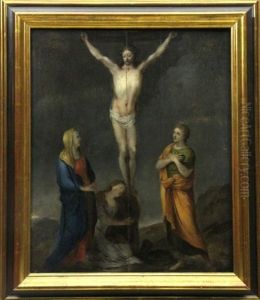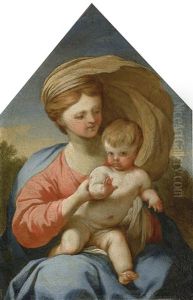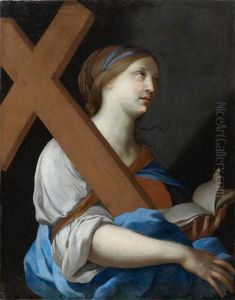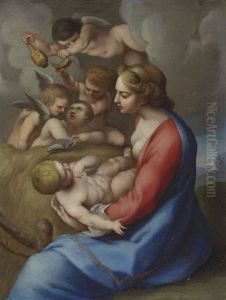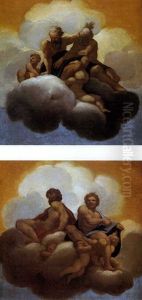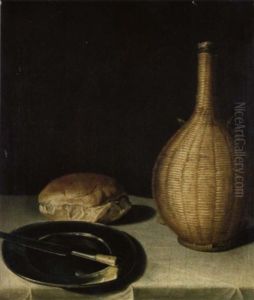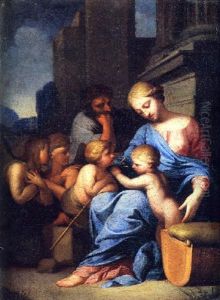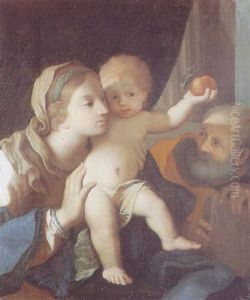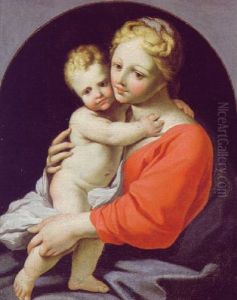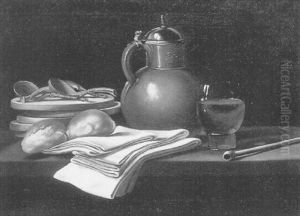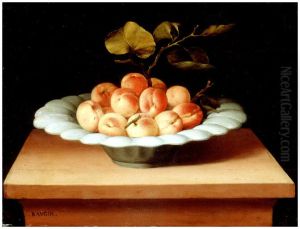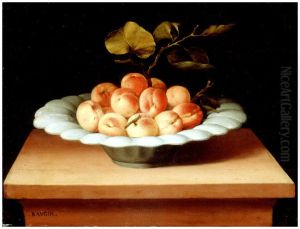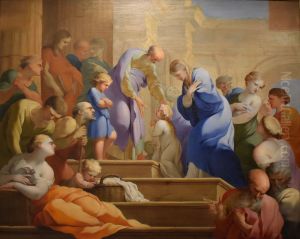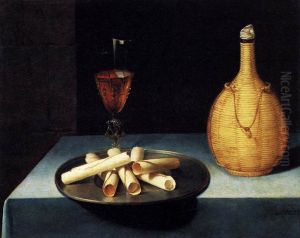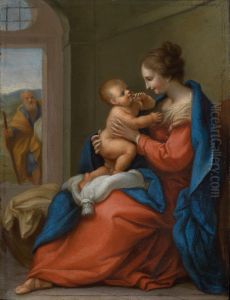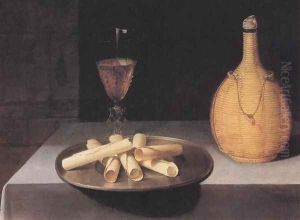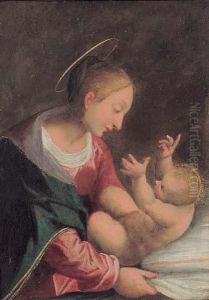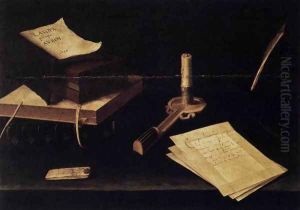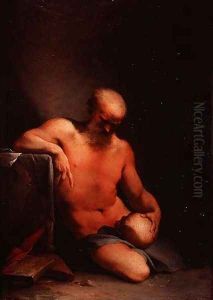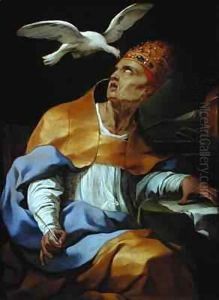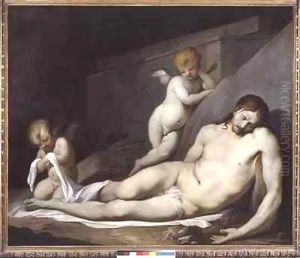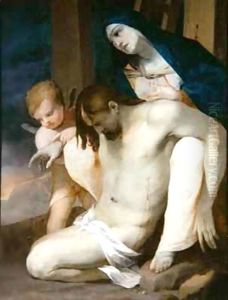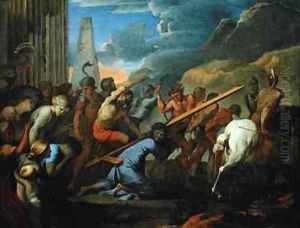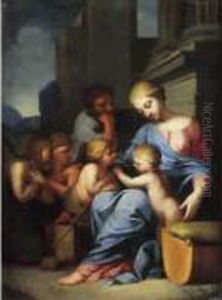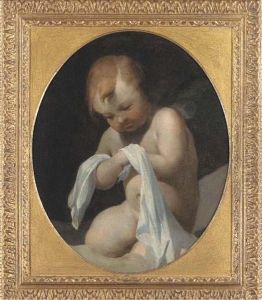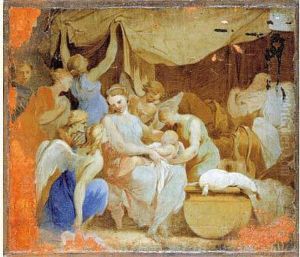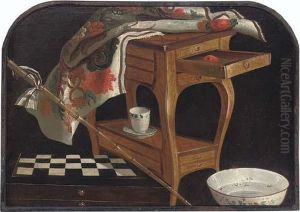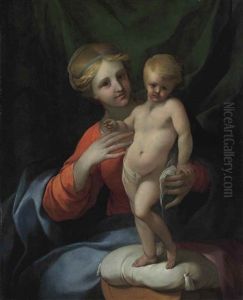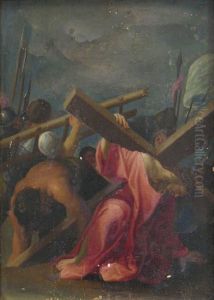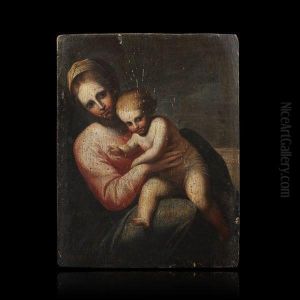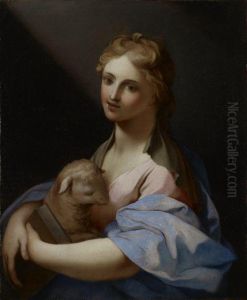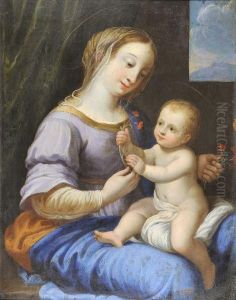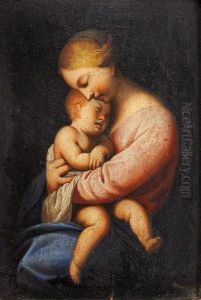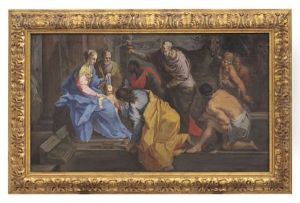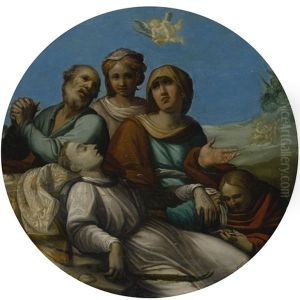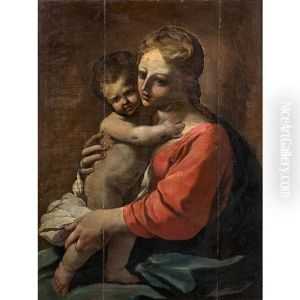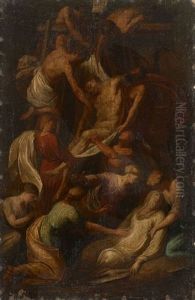Lubin Baugin Paintings
Lubin Baugin was a French painter born in Pithiviers in 1612. He was primarily known for his detailed still lifes and religious compositions, showcasing a remarkable ability to blend naturalistic detail with a serene, almost mystical quality. Baugin's work is often characterized by its meticulous attention to the texture and form of objects, as well as the subtle interplay of light and shadow.
Baugin's early life and training are not well-documented, but it is believed that he spent significant time in Italy, particularly in Rome, where he was exposed to the works of Caravaggio and his followers. This exposure is evident in Baugin's use of dramatic lighting and realistic representation of subjects. Despite the Italian influences, Baugin's work remains distinctly French, with a lighter palette and a more delicate handling of subjects compared to his Italian contemporaries.
During his career, Baugin enjoyed the patronage of the French court and was involved in several high-profile commissions. However, his work fell into relative obscurity after his death in 1663 until it was rediscovered and reevaluated in the 20th century. Today, Baugin is celebrated for his contribution to the still life genre and his unique blending of French and Italian artistic traditions.
Baugin's most famous works include 'The Five Senses', a series of still lifes that are considered among the finest examples of the genre in the 17th century. Each painting in the series is a masterful display of Baugin's skill in rendering objects with lifelike precision and imbuing them with symbolic meaning. Despite the limited number of his works that have survived, Lubin Baugin remains an important figure in the history of French painting, celebrated for his ability to capture the beauty and complexity of the world around him.
